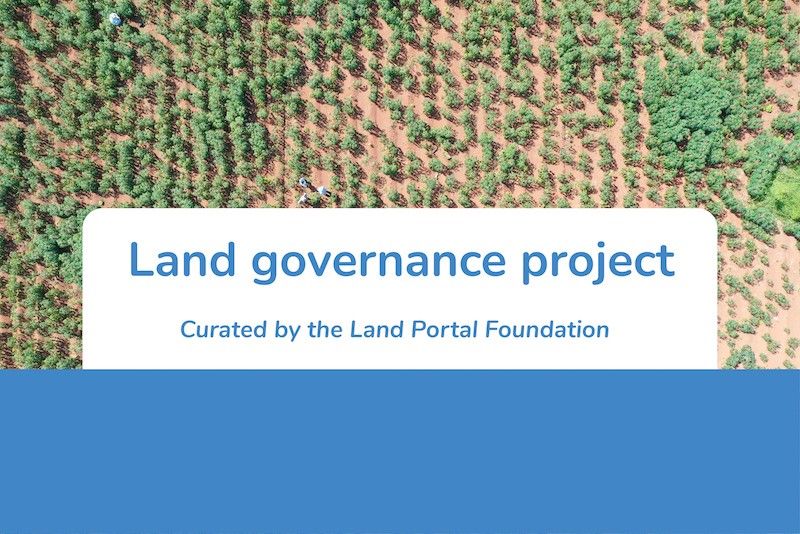Community / Land projects / Programme to sustainably manage and restore land and biodiversity in the Guadalquivir Basin
Programme to sustainably manage and restore land and biodiversity in the Guadalquivir Basin

€1372473.08
12/21 - 12/21
Concluído
This project is part of
Implementing Organisations
Donors
Data Providers
Objectives
To develop and implement an inclusive territorial planning and governance strategy as a model for the conservation, restoration and sustainable management of land, water, biodiversity and integrated production systems to achieve Land Degradation Neutrality (LDN) in the Guadalquivir River Basin (GRB).
Other
Note: Disbursement data provided is cumulative and covers disbursement made by the project Agency.
Target Groups
272. The direct beneficiaries of the project are 1,836 people, of whom 918 are women and 918 are men. These people will benefit from the combined development of several project actions: stronger governance for sustainable production systems, water, soil, and vegetation in the GRB, improvement of territorial planning capacities at the microbasin level and the efficient management of water resources; the implementation of SLM and SBM practices, and participation in productive entrepreneurship through the Tarija Regional Water Fund, among others. 273. The basin management approach, set into motion in an integrated and multi-scale way, will contribute to strengthening governance and doing capacity-building in sustainable production system management and the scaling up of SLM and SBM, and will enable building a common vision of contributions from the local level to national LDN targets. The project framework will contribute to reducing land degradation and to restoring diverse production systems via the implementation of local water management plans at the microbasin level that incorporate into their design and execution guidelines to develop SLM and SBM at the landscape level, in the LDN approach framework. The participating institutions shall coordinate implementation of SLM and SBM practices which are most appropriate to addressing the loss of environmental functions and land degradation in the project intervention area. Restoration, SBM, and SLM will all contribute to reducing food and nutritional insecurity, strengthening and diversifying livelihoods with gender and generational equity, and increasing socioecological resilience to climate change. Actions will be carried out in a participatory manner, promoting the involvement of producers, local communities, small-scale farmers, livestock farmers, local authorities, and more, at different stages of the project. 274. Another contribution at the institutional level is related to generating and strengthening knowledge around tracking LDN targets. 275. By developing the project components and doing capacity-building among beneficiaries, benefits will be yielded at the local, regional, and national level in the areas of livelihoods, environmental sustainability, progress toward LDN in the GRB, and more. From the environmental standpoint, there will be a positive impact on the conservation and maintenance of environmental functions; improvement of cultural and identity values; benefits for the local economy through the strengthening of the Tarija Regional Water Fund, and the sale of products obtained using SLM and SBM by strengthening and setting up production undertakings, especially led by women, which in turn will enable job creation, production diversification, the endowment of added value to agrobiodiversity products, improved income, and more. 276. The project will foster Decent Rural Employment by way of actions taken in the framework of the four decent employment pillars established by FAO (Table 8). Pillars Topics under the pillars related to the project intervention Specific project actions 1. 1. Job Creation and Business Development ? Increasing the productivity of rural labor via better access to training, outreach, services, and technology. ? Promoting sustainable productive entrepreneurship in rural areas via support for bringing products to market for microenterprises, access to markets, training, and more. ? Support for national institutions in gathering and analyzing data disaggregated by age and gender in rural labor markets. ? Job creation programs piloted in rural zones, in particular for youth and women. § Capacity-building program (Output 1.1.3) § Implementation of SLM and SBM practices in the framework of the LMMPs (Output 2.1.1) § Technical support and setting up field schools (Output 2.1.2) § Database and reporting for the target microbasins with a gender and participatory approach to track SLM and SBM actions (Output 2.1.3). § Setting up productive entrepreneurship (50% women-led) (Output 3.1.2) 1. Social Protection ? Improving working conditions in rural areas, including effective protection for maternity and income § Capacity-building program (Output 1.1.3) § Implementation of SLM and SBM practices in the framework of the LMMPs (Output 2.1.1) § Technical support and setting up field schools (Output 2.1.2) § Setting up productive entrepreneurship (50% women-led) (Output 3.1.2) 2. Labor Standards and Rights § Support for freedom of association, setting up producer associations § Eliminating discrimination and promoting equality. The aim is to reduce/eliminate gender and age discrimination § LMMPs developed (Output 1.1.2) § Setting up productive entrepreneurship (50% women-led) (Output 3.1.2) § Capacity-building program (Output 1.1.3) § Technical support and setting up field schools (Output 2.1.2) § Implementation of SLM and SBM practices in the framework of the LMMPs (Output 2.1.1) 3. Governance and Social Dialogue § Empowerment and greater participation from the rural population in social and political dialogue via their organizations, especially women and youth. § Support participation of the impoverished rural population, especially underprivileged groups, in local decision-making and governance mechanisms. § Synergies built between organizations and opportunities created for farmer-to-farmer learning § Stronger platform for water, soil, and vegetation governance (Output 1.1.1) § LMMPs developed (Output 1.1.2) § Technical support and setting up field schools (Output 2.1.2) Table 8. Project’s Contribution to the Decent Employment Pillars




